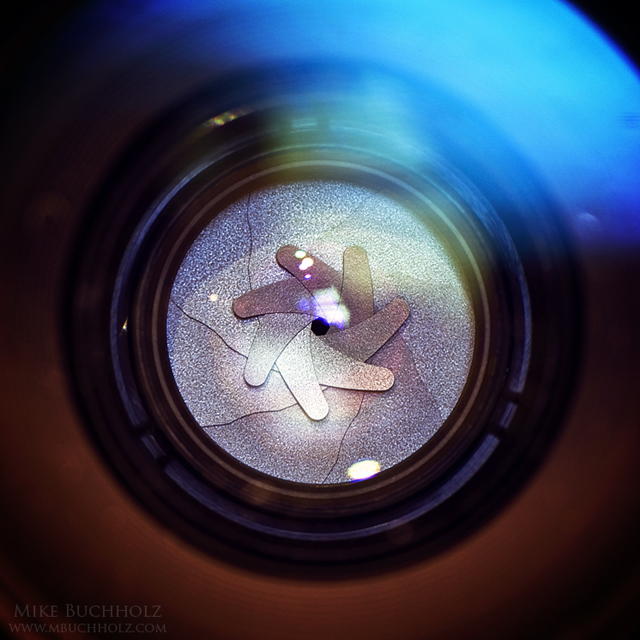A lesson for the non-photographers out there: there are two main ways to adjust the exposure of a shot to ensure your image is neither too bright, nor too dark — shutter speed (length of exposure) and aperture (how much light is allowed through the lens).
The below picture is of the iris diaphragm on a Nikkor 35mm lens. These are overlapping plates that will either fold in over each other (obviously decreasing the light passing through), or expand outwards (allowing more light) to change the size of the aperture. This is essentially the mechanical equivalent of how the human eye’s iris works.
Now, while aperture has more impact on an image than just how bright/dark it is, I’m going to refrain from confusing people by explaining how a large depth of field is produced with a small aperture stop, which is actually a large f-number and a narrow depth of field comes from a large aperture stop which is represented by a small f-number.




[…] Iris Diaphragm; Nikkor 35mm f/1.8 Pictures & Prints | M. Buchholz … […]
Really like this shot! Came across your blog from Photoblog-Community.
[…] Boycott. Why …If Darwinism Is True Then What's The Point Of Human Reproduction …Iris Diaphragm; Nikkor 35mm f/1.8 Pictures & Prints | M. Buchholz …Agricola – Analog Farmville – The Simple LifeWhen do you need Fidelity and Netbenefits […]
[…] Iris Diaphragm; Nikkor 35mm f/1.8 Pictures & Prints | M. Buchholz … […]
[…] Iris Diaphragm; Nikkor 35mm f/1.8 Pictures & Prints | M. Buchholz Photography […]
Ride a Century…
[…] for such a rewarding way to spend a […]…